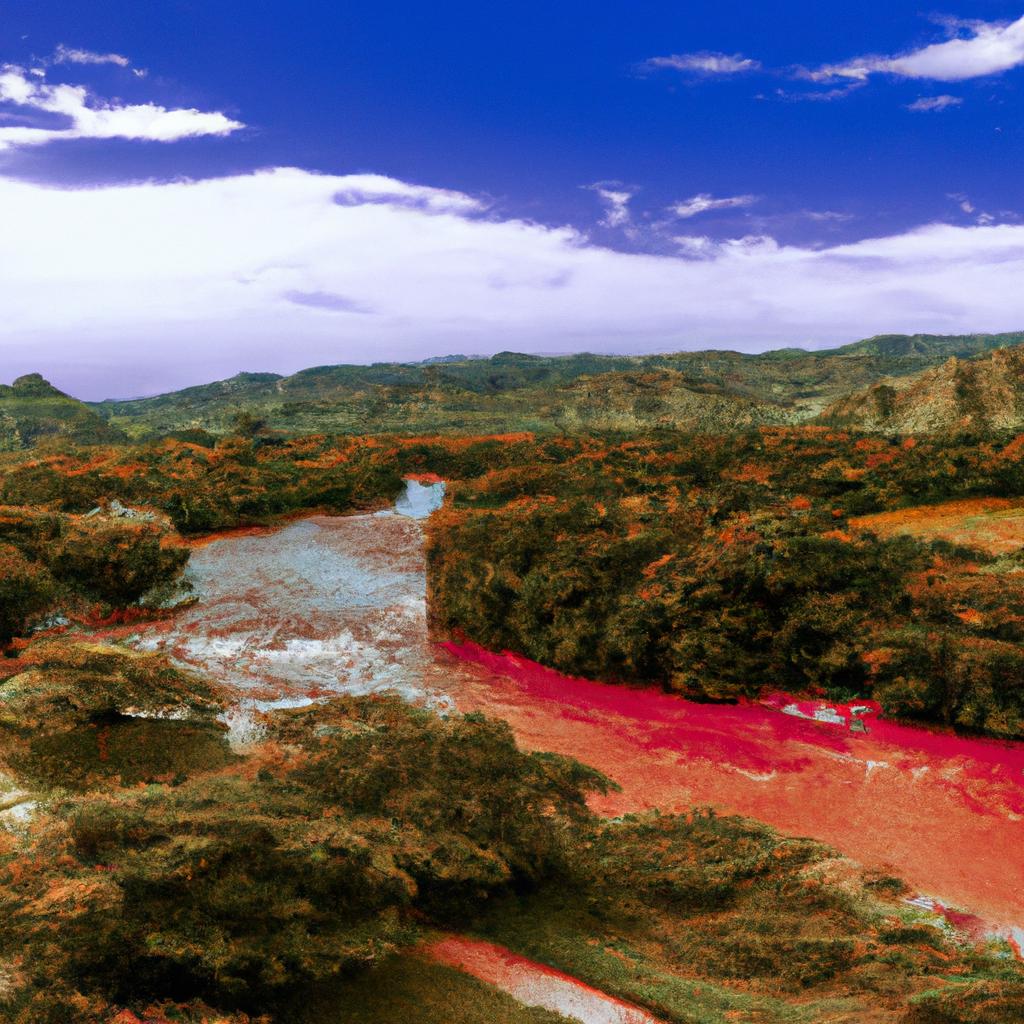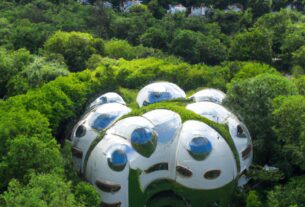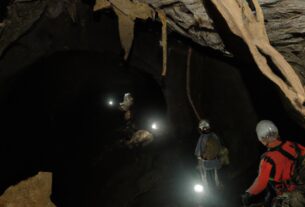Have you ever heard of a river that changes color? It may sound like a fairy tale, but the Caño Cristales River in Colombia is a real-life phenomenon that has captivated locals and tourists alike. Known as “the river of five colors,” this natural wonder displays vibrant hues that seem straight out of a painting. In this article, we’ll delve into the captivating world of the Caño Cristales River and uncover the secrets behind its mesmerizing color-changing magic.
The Caño Cristales River is nestled in the picturesque Serrania de la Macarena National Park, located in the Meta department of Colombia. Stretching for approximately 100 kilometers, this stunning river dazzles visitors, especially during the rainy season between June and November. It is during this time that a unique species of aquatic plants called “Macarenia clavigera” covers the riverbed, transforming it into a kaleidoscope of colors.
But what causes the river to change its colors so dramatically? The Macarenia clavigera plants are not the sole protagonists; the river’s vibrant hues are also influenced by various minerals such as iron, copper, and sulfur. These minerals interact with sunlight and the water’s pH levels, resulting in a breathtaking spectrum of colors including red, blue, green, yellow, and black.
Beyond its aesthetic allure, the Caño Cristales River holds significant importance for the locals. It serves as a vital source of water for agriculture, fishing, and other economic activities in the region. Moreover, the river symbolizes cultural and historical significance for the indigenous communities living in the area.
Now, let’s delve into the location and history of this captivating river.
Location and History
The Caño Cristales River finds its home within the Serrania de la Macarena National Park, a breathtaking natural reserve situated in the Meta department of Colombia. This park encompasses approximately 6,200 square kilometers and is teeming with diverse flora and fauna, including endemic species like the cotton-top tamarin and the black spider monkey. Its rich biodiversity and unique landscapes have made it a favored ecotourism destination, attracting visitors from around the globe.
Historically, the Caño Cristales River has played a pivotal role in the region. Indigenous communities have revered the river as a sacred place, conducting rituals and ceremonies to honor its natural beauty. However, during the 20th century, the river became entangled in Colombia’s internal armed conflict, serving as a refuge for guerrilla groups. In recent years, the area has experienced a period of peace and economic growth, with ecotourism emerging as a vital source of income for local communities.
Through time, the Caño Cristales River has undergone both natural and human-induced transformations. Natural factors, such as seasonal variations in water levels due to heavy rainfall, can lead to flooding and erosion of the riverbed. Additionally, human activities like deforestation, mining, and agriculture have negatively impacted the river’s water quality and ecosystem. Nevertheless, concerted efforts are being made to restore the river’s natural equilibrium and preserve its unique beauty for future generations.
The Science Behind the Color Change

If you’re curious about how the Caño Cristales River achieves its extraordinary color-changing phenomenon, prepare to be mesmerized by the interplay of geological and environmental factors.
The river’s color change primarily stems from the presence of diverse minerals. Iron, copper, sulfur, and other minerals within the riverbed react with sunlight and the water’s pH levels, resulting in a remarkable range of colors. But that’s not all—another key contributor is the presence of algae, particularly the Macarenia clavigera plant. During the rainy season, this unique algae species turns a vibrant shade of red. When combined with the minerals, it creates an awe-inspiring effect that has earned the river the nickname “the river of five colors.”
Cultural Significance
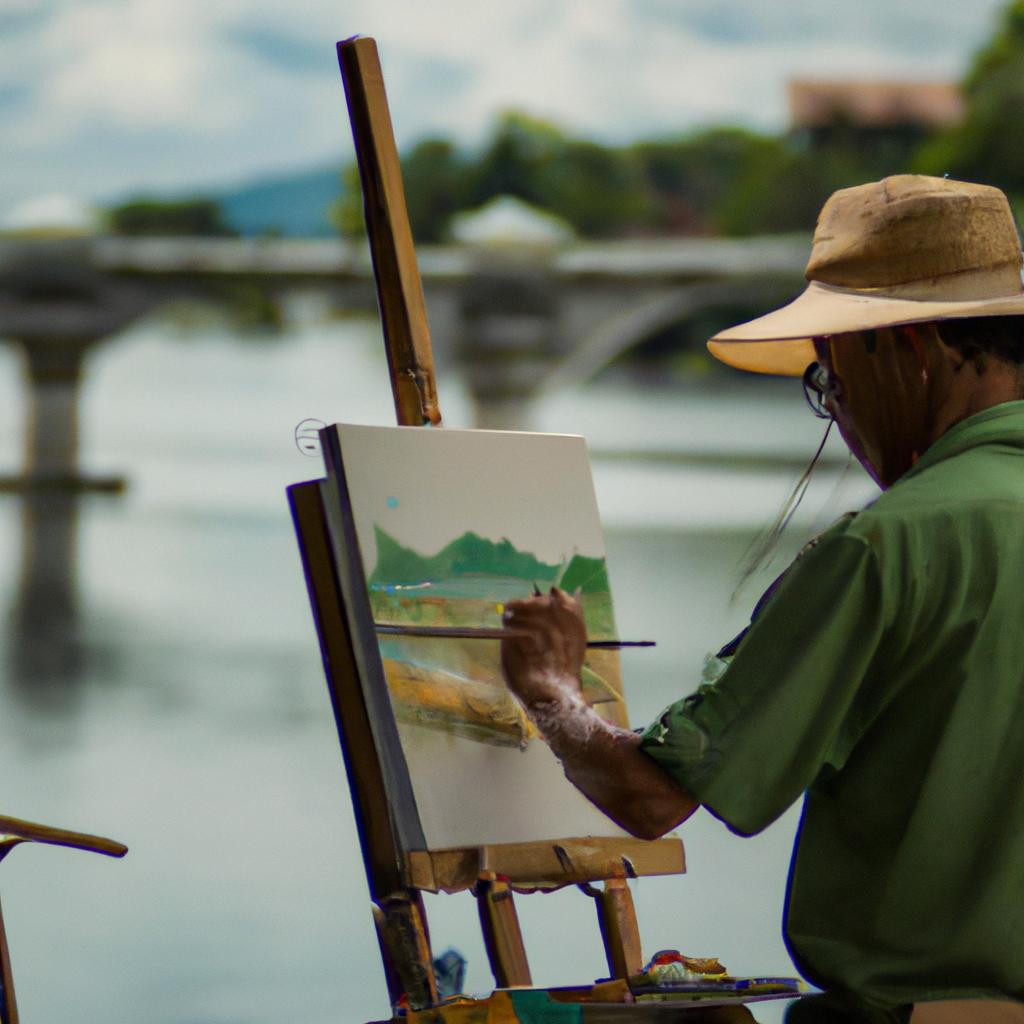
The Caño Cristales River holds immense cultural significance for the indigenous communities residing in the surrounding areas. Ancient traditions and beliefs intertwine with the river’s essence, permeating the fabric of their lives. Here are some ways in which the river has shaped local culture:
- The river is considered sacred by the indigenous communities, who hold a deep spiritual connection to it. They view the river as a source of healing and purification, often utilizing its water for medicinal purposes. Furthermore, the river is associated with fertility, with couples often visiting its banks to offer prayers for children.
Artists, musicians, and writers in Colombia have found inspiration in the Caño Cristales River. Its breathtaking colors and unique landscape have been encapsulated in various art forms, including paintings, songs, and poetry. An example is the renowned Colombian singer Juanes, who composed a song called “La Flaca” inspired by the Caño Cristales River.
Festivals and events celebrate the river’s beauty and cultural significance. The most renowned is the “Festival of the Five Colors,” held annually in the town of La Macarena. This lively festival highlights traditional dances, music, and gastronomy, paying homage to the river’s splendor and cultural importance.
Tourism and Conservation
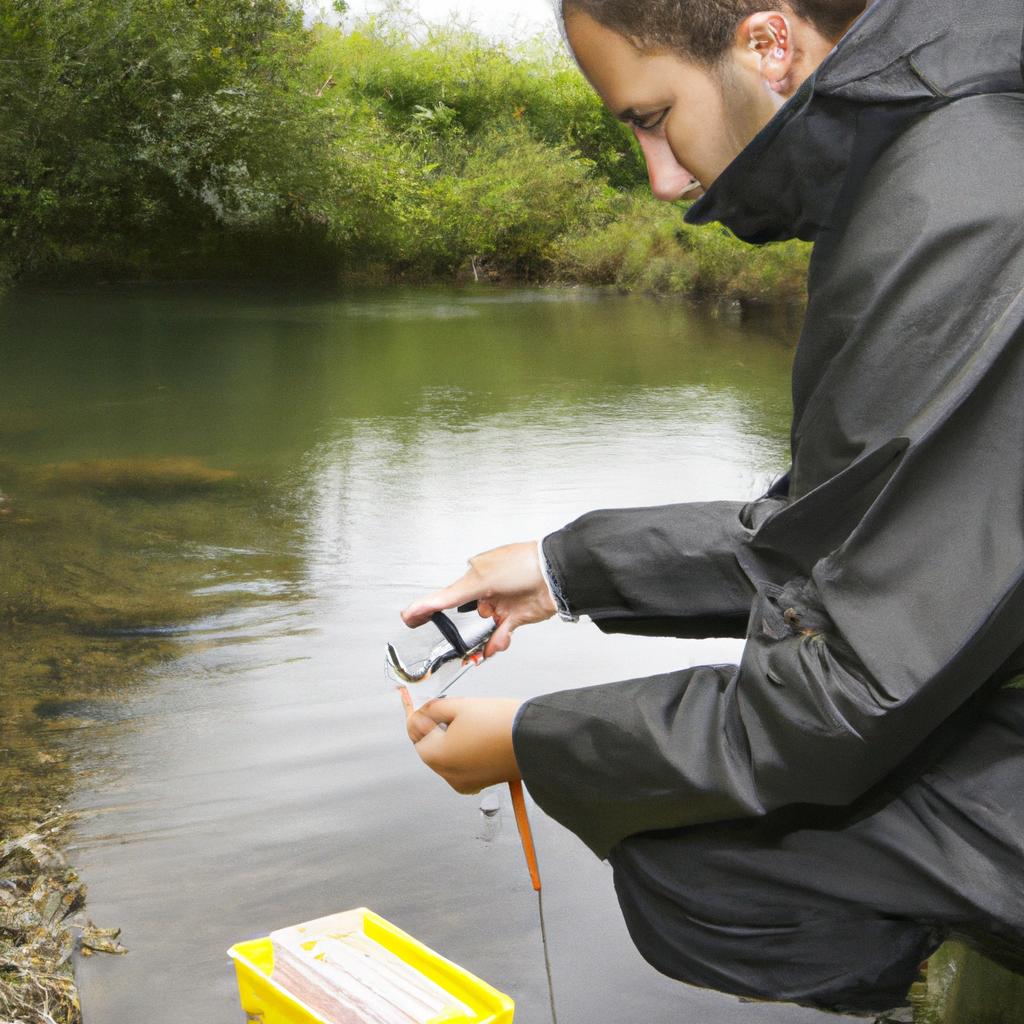
The Caño Cristales River’s extraordinary beauty has attracted an increasing number of tourists in recent years. While tourism brings economic benefits to the region, concerns have arisen regarding its impact on the river’s delicate ecosystem. Unregulated activities such as swimming, fishing, and the use of motorized boats have resulted in pollution and erosion. Additionally, the influx of visitors has taken a toll on the Macarenia clavigera plants, which are crucial for the river’s vibrant color transformation.
To address these concerns, the Colombian government, in collaboration with local communities and conservation organizations, has implemented measures to regulate tourism activities. These include visitor limits, designated trails, and bans on harmful activities. Such efforts aim to mitigate the negative impacts of tourism and safeguard the river’s pristine beauty.
Various initiatives have been launched to preserve and protect the Caño Cristales River’s unique ecosystem. One of these is the “Adopt a Hectare” program, inviting individuals and organizations to support the conservation of the river’s surrounding forests. Funds raised are utilized to combat deforestation, illegal mining, and other activities that pose a threat to the river’s ecosystem. Furthermore, the Colombian government has designated the Serrania de la Macarena National Park, encompassing the Caño Cristales River, as a protected area. The National Parks Authority is entrusted with preserving the park’s biodiversity and cultural heritage through regulations and enforcement.
Sustainable tourism initiatives play a pivotal role in minimizing the impact on the river’s ecosystem. The “Ecotourism Route of the Three Rivers” is one such initiative that invites visitors to explore the region’s natural beauty while learning about its cultural and historical significance. This eco-friendly route incorporates guided tours, educational activities, and community-based tourism initiatives, promoting responsible and sustainable practices.
In conclusion, the Caño Cristales River in Colombia is a marvel that deserves both admiration and protection. With its ever-changing colors and enchanting allure, this natural wonder beckons nature enthusiasts and adventure seekers. However, let us not forget its significance to the locals, who rely on it for their livelihoods and cultural identity. Sustainable tourism initiatives and conservation efforts are imperative for preserving the river’s natural splendor and ensuring its long-term sustainability.
At TooLacks, we are committed to promoting awareness and appreciation of nature’s wonders, such as the Caño Cristales River. By sharing knowledge and inspiring curiosity, we aim to protect and preserve our planet’s precious resources for future generations to enjoy. So, if you’re seeking an adventure that seamlessly blends natural beauty and cultural significance, consider adding the Caño Cristales River to your travel bucket list. You’ll embark on an unforgettable journey of discovery and awe.
